By: Ameen Hosain As an angler it is often easy to forget the true value of the fish one is trying to catch. In streams and rivers, trout must go through a long, and daunting process in order to sustain populations. Naturally reproducing fish endure tiring days, where males endlessly compete with each other for territory and where females work extremely hard to create and protect the right environment for eggs to be laid and fertilized.
During spawning seasons, especially in waters with naturally reproducing fish, one of the most important and often unnoticed ways that anglers have an effect on trout populations is by disturbing trout on spawning redds.
When anglers have a lack of knowledge regarding what redds look like, as well as the purpose they serve, it increases the chance of disturbing the redds and ultimately harming the stream's trout population.
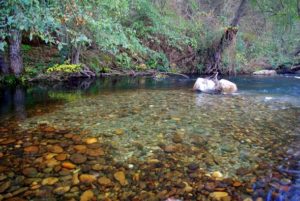 Locating trout redds can often be a difficult task, however there are a few things to look for before stepping into the water, or when observing fish. The first and most telling sign of redd is a section of bright, clean gravel in shallow water (seen right). Female fish will turn over gravel to create hospitable areas to lay their eggs. This process in itself consumes much of a fish’s energy and by stepping on or disturbing these gravel beds, a fish’s energy goes to waste.
Locating trout redds can often be a difficult task, however there are a few things to look for before stepping into the water, or when observing fish. The first and most telling sign of redd is a section of bright, clean gravel in shallow water (seen right). Female fish will turn over gravel to create hospitable areas to lay their eggs. This process in itself consumes much of a fish’s energy and by stepping on or disturbing these gravel beds, a fish’s energy goes to waste.
Another telltale sign indicating a redd is a pair of fish swimming very close together- almost always on top of a recently created gravel bed. These fish are a pair, one male and one female, with the female protecting her laid eggs, and the male attempting to fertilize them. This male can often be observed voraciously defending his position, frequently chasing off other fish who are attempting to take his hard earned place at the female’s side.
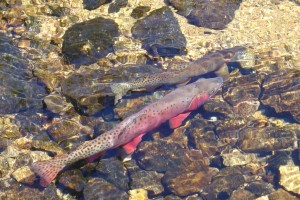 Choosing whether or not to fish to spawning trout is an issue that sees much debate, however with conservation in mind, it is highly recommended to leave these fish alone. In the act of spawning, fish expend large amounts of energy and are exhausted. Hooking into these trout will often leave them much too tired, with mortality rates highly escalated even after a safe release.
Choosing whether or not to fish to spawning trout is an issue that sees much debate, however with conservation in mind, it is highly recommended to leave these fish alone. In the act of spawning, fish expend large amounts of energy and are exhausted. Hooking into these trout will often leave them much too tired, with mortality rates highly escalated even after a safe release.
In waters where trout rely on the spawning process to survive, harming fish can have a profound effect on populations, resulting in lowered fish counts, and less productive fisheries. Anglers fishing in wild waters should pay close attention to spawning seasons, and steer clear of fish attempting to spawn. Doing so will aid in maintaining healthy fish populations, as well as ensure that there are wild fish to catch far into the future.






 According to
According to 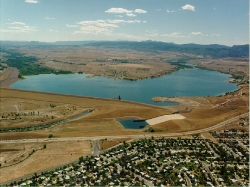 If not one who collects rainwater, another way to assist in the maintenance of healthy water levels is to pay close attention to sprinkler systems; making sure to turn off systems when it rains, and ensuring that they are only used a maximum of three times a week. These things are easy to do and are highly recommended by Denver Water in order to keep Colorado’s reservoirs in good shape.
If not one who collects rainwater, another way to assist in the maintenance of healthy water levels is to pay close attention to sprinkler systems; making sure to turn off systems when it rains, and ensuring that they are only used a maximum of three times a week. These things are easy to do and are highly recommended by Denver Water in order to keep Colorado’s reservoirs in good shape. "Northern pike are aggressive predators with big appetites and if their population continues to grow in Green Mountain Reservoir, that will have profound impact on the fish we have stocked there, as well as potential impacts to the endangered native fish we are currently trying to recover," said CPW's Jon Ewert, aquatic biologist from Hot Sulphur Springs.
"Northern pike are aggressive predators with big appetites and if their population continues to grow in Green Mountain Reservoir, that will have profound impact on the fish we have stocked there, as well as potential impacts to the endangered native fish we are currently trying to recover," said CPW's Jon Ewert, aquatic biologist from Hot Sulphur Springs.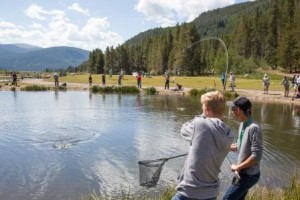
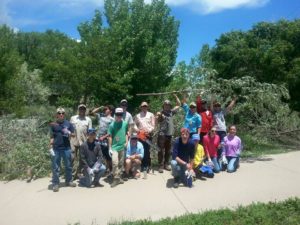
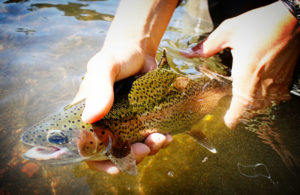
 that would weaken the temperature standards that are supposed to protect trout streams throughout the state. The proposed changes brought forth by the Water Quality Control Division (WQCD) would put many trout fisheries at risk including during spawning periods.
that would weaken the temperature standards that are supposed to protect trout streams throughout the state. The proposed changes brought forth by the Water Quality Control Division (WQCD) would put many trout fisheries at risk including during spawning periods.
 Trout Unlimited is working to ensure that the temperatures of Colorado's streams remain at a healthy level for trout to survive. CTU has put together an
Trout Unlimited is working to ensure that the temperatures of Colorado's streams remain at a healthy level for trout to survive. CTU has put together an  "It means a lot to me to be nominated as one top ambassadors in the Nation," said Muench. "I've easily put in a similar amount of time into the club as I have my final year of Engineering, I care a lot about the fly fishing club and it's amazing to realize that you're one of the best in the nation. No matter how much work I put in, I keep finding myself wondering if we could have done it better and what we've done wrong. It's just something else to have someone else say you're one of the best in the Country."
"It means a lot to me to be nominated as one top ambassadors in the Nation," said Muench. "I've easily put in a similar amount of time into the club as I have my final year of Engineering, I care a lot about the fly fishing club and it's amazing to realize that you're one of the best in the nation. No matter how much work I put in, I keep finding myself wondering if we could have done it better and what we've done wrong. It's just something else to have someone else say you're one of the best in the Country."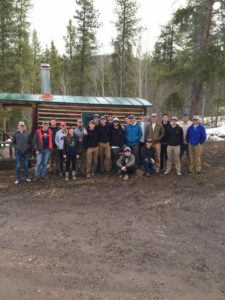
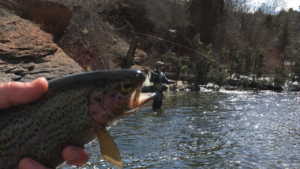 The success of the club doesn't stop there. David is hoping that the new president, Ryan Watson, will take the club even further and continue to expand, as well as have an improved focus on conservation.
The success of the club doesn't stop there. David is hoping that the new president, Ryan Watson, will take the club even further and continue to expand, as well as have an improved focus on conservation. Being in the fraternity of a select few Costa Ambassadors, the role doesn't stop after graduation. Muench plans to continue to stay involved with TU and make a difference for Colorado's rivers and trout.
Being in the fraternity of a select few Costa Ambassadors, the role doesn't stop after graduation. Muench plans to continue to stay involved with TU and make a difference for Colorado's rivers and trout.
 “Just as our landscapes make Colorado a special place, the bipartisan bill creating an annual Public Lands Day demonstrates positive leadership at a time when politics is often too full of division,” said Suzanne O’Neill, Colorado Wildlife Federation executive director. “Public lands, from the mountains to the sagebrush steppe and rolling plains, support our fish and wildlife, hunting, fishing, wildlife watching, and other outdoor recreation that generates more than $34 billion in economic activity each year.”
“Just as our landscapes make Colorado a special place, the bipartisan bill creating an annual Public Lands Day demonstrates positive leadership at a time when politics is often too full of division,” said Suzanne O’Neill, Colorado Wildlife Federation executive director. “Public lands, from the mountains to the sagebrush steppe and rolling plains, support our fish and wildlife, hunting, fishing, wildlife watching, and other outdoor recreation that generates more than $34 billion in economic activity each year.”
